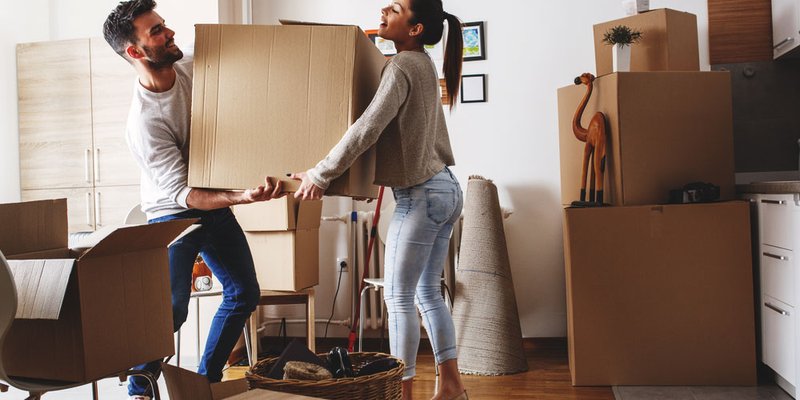
If you are not redirected within 30 seconds, please click here to continue.
Samedi: 10h – 16h HAE

If you are not redirected within 30 seconds, please click here to continue.
If you are not redirected within 30 seconds, please click here to continue.
Priced Out of Cities, Millennials Turn to Cottage Country

With home prices once again on the rise in many regions, millennials can be forgiven for their pessimism about affording a first home.
With the average Canadian property value now north of half a million dollars—and higher in the Greater Toronto and Vancouver areas—first-time homebuyers are getting creative with their home-buying strategies.
Some are even thinking about forgetting city living altogether and going straight for the cabin in the woods.
That’s right, after being priced out of expensive urban housing markets, more and more millennials are setting their sights on properties in regions where affordability isn’t so brutal, i.e., cottage country.
Given that such properties can be hours outside of the cities where they work, however, many of these young homebuyers continue to rent in the city.
It's the “cottage first, house second” approach. And it’s a homebuying tactic that’s gaining traction.
A 2019 survey conducted by RE/MAX found a majority of millennials (56%) have considered purchasing a recreational property. That’s a 14% increase from 2018.
"We are finally witnessing the long-anticipated generational shift of purchasing power from baby boomers to millennials," declared Christopher Alexander, Executive Vice President, RE/MAX of Ontario-Atlantic Canada. "With the high cost of urban living taking many young homebuyers out of those markets, more millennials are turning to recreational properties as a viable option for homeownership."
Current Prices “Don’t Make Sense”
First-time buyers, particularly in and around Toronto and Vancouver, face sticker shock when starting their home-hunting process. By comparison, relatively cheap recreational properties (often just a couple hours away) are compelling.
Let’s look at the stats:
- The average home price in the GTA in October was up 5.5% to $852,000 for all property types, according to Toronto Real Estate Board figures.
- In Greater Vancouver, sales rose 45% in October. While the composite benchmark price was down 6.4% from the year before, the average selling price is still $992,900 for all property types.
- As of spring 2019, recreational property prices across Canada rose 5% to $411,500, according to Royal LePage.
“We started looking to buy a house in the west end [of Toronto] a few years ago but quickly stopped,” 28-year-old Amanda Morrison told Toronto Life. “A tear-down was listed for $1.3 million! Even with our combined incomes, it didn’t make sense.”
Instead, she and her partner opted for a three-bedroom, one-bathroom cottage in the Township of Georgian Bay for $405,000.
While continuing to rent in the city, the couple now rent out their cottage for about half of the year for up to $350 a night.
Competition with Boomers
But just as millennials are finding the competition tough in urban markets, they may soon find themselves competing for recreational properties as well.
With many baby boomers now in or about to enter retirement, demand for cottage properties has been steadily increasing, according to research from Royal LePage.
"Today (young families) find themselves having to compete with their parents for that spot on the water, with boomers leveraging the significant equity from their existing urban homes,” said Phil Soper, president and CEO, Royal LePage. “In Ontario and Quebec, this has resulted in exceptional demand and upward pressure on prices. In Western Canada, it has supported demand and stabilized prices."
The growing demand is forecast to raise the aggregate price of a single-family home in recreational regions by 4.7% to $429,714 by 2020, Royal LePage says.
Requirements for Bank Financing
While an affordable cabin in the woods is tempting for many young buyers, there are conditions the property must meet in order to qualify for financing from an institutional lender.
Susan Copp, a mortgage agent with Dominion Lending, told the Globe and Mail earlier this year that even though prices are more affordable in cottage country, if the home is “a small plywood box…no bank will touch it.”
To get the best rates on a rec property without a large down payment, you’ll generally need a property that:
- Has a minimum square footage (e.g., 600-800)
- Is fully winterized
- Has potable water, four-seasons insulation and heating
- Has a full kitchen and three-piece bathroom
- Provides year-round access
If these conditions are met, a buyer could potentially purchase the property with as little as 5% down. If not, you’ll require a down payment of at least 10% to 20%, or even 35% depending on the lender.
Get money-saving tips in your inbox.
Stay on top of personal finance tips from our money experts!








